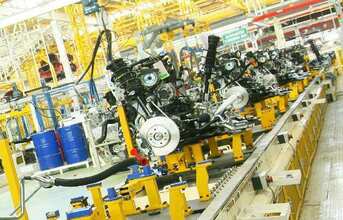
Doing so can help avoid the following situations that throttle manufacturing performance:
Lack of visibility: Having poor insight into shopfloor operations can slow decision-making, resulting in delays and unhappy customers. Understanding the situation on the shopfloor in real-time helps manufactures to better plan to meet customer demand.
Communication bottlenecks with disparate systems: Manufacturers typically purchase ERP and MES systems from different vendors which often times leads to manually entering data from one system to another in order for both to communicate with each other. This is inefficient and costly.
Increased inventory costs: If there is a quality or maintenance issue on the floor, real-time alerts and notifications can raise a red flag, enabling immediate action to resolve the issue. On the other hand, without this real-time shopfloor data access, manufacturers run the risk of higher amounts of scrap and inventory which negatively impacts the bottom line.
Through integration of ERP and MES, manufacturers can achieve a holistic view of their business processes and core production, and better utilise shopfloor data crucial to improving operational efficiency and maximising profitable manufacturing outcomes.
This "one version of truth" delivers more accurate data from the shopfloor (MES) to the top floor (ERP), enabling manufacturers to adjust schedules and processes based upon machine availability. This in turn, leads to improved scheduling accuracy of the ERP platform.
Real-time reconciliation of information between ERP and MES ensures data integrity for supporting accurate scheduling, planning, monitoring, resourcing and costing. This integration spans structural data, job scheduling and production reporting, effectively pulling data into a seamless bi-directional information environment.
Users will benefit significantly from improvements in promise-to-order, labour and equipment utilisation, and business intelligence as a result of tighter integration and real-time feedback between ERP and MES. In addition, a real-time closed-loop between the business systems and the plant floor provides an accurate up-to-the-minute view of machine and production availability for improving operational effectiveness and responsiveness.
(Continued on the next page)


























